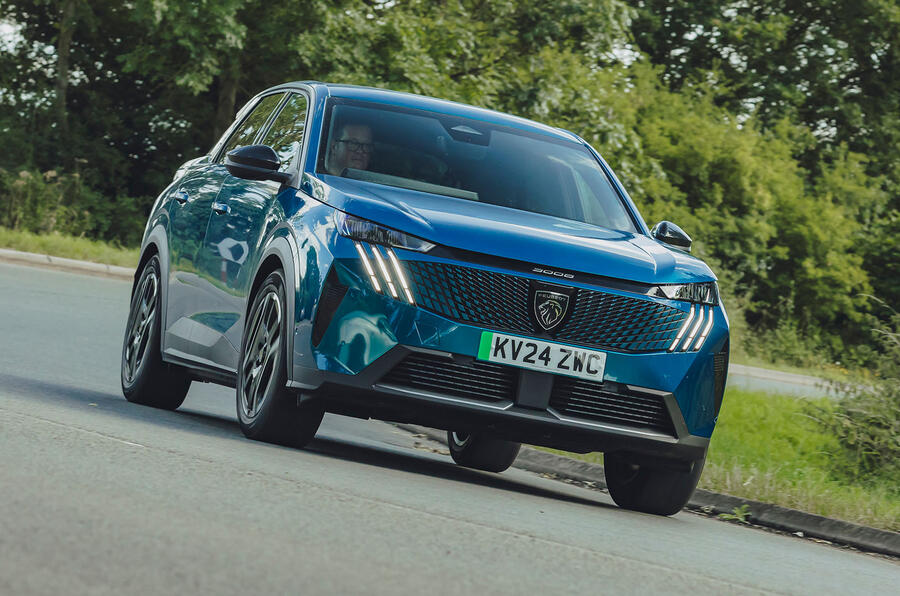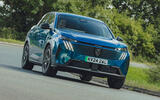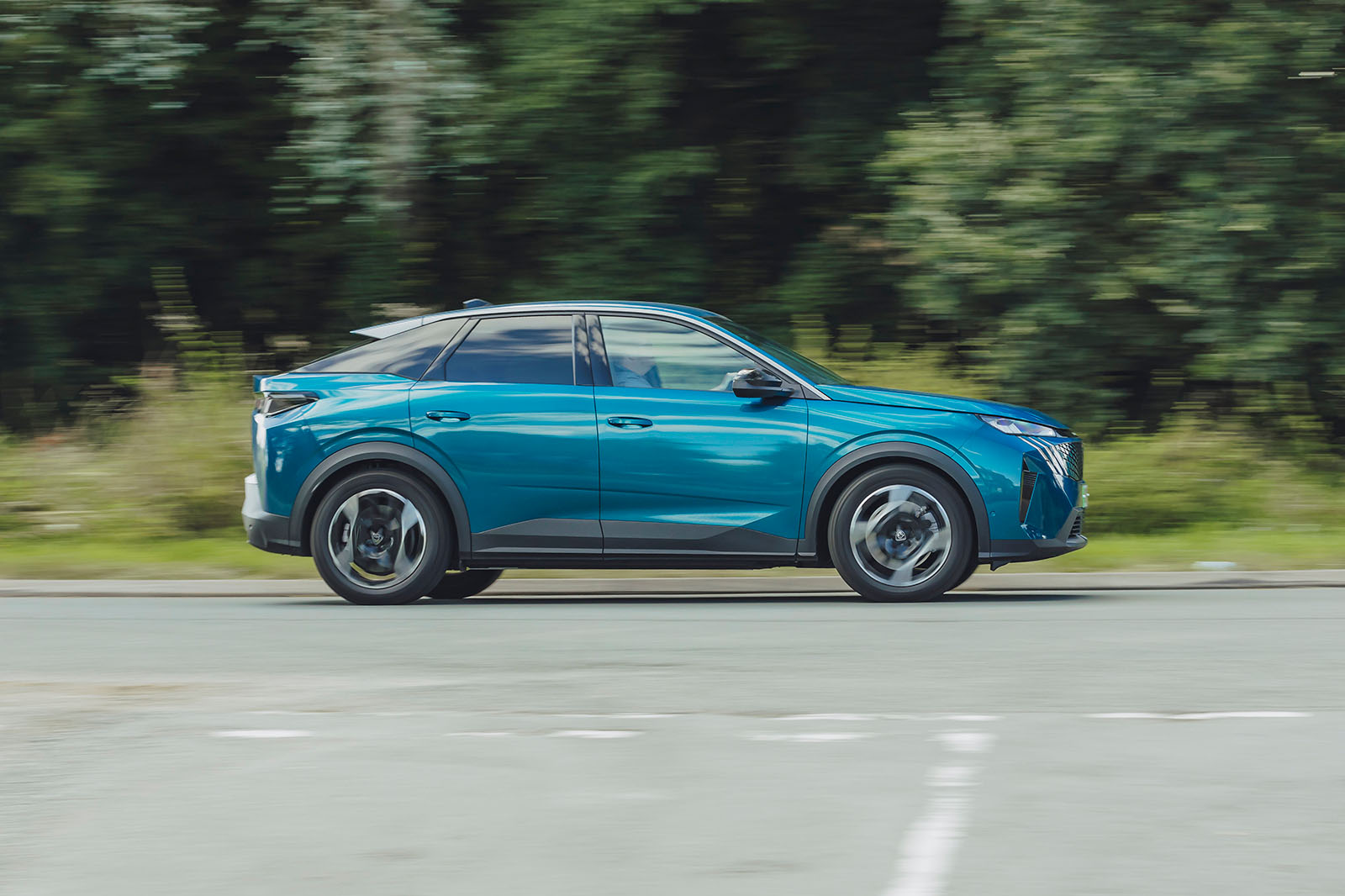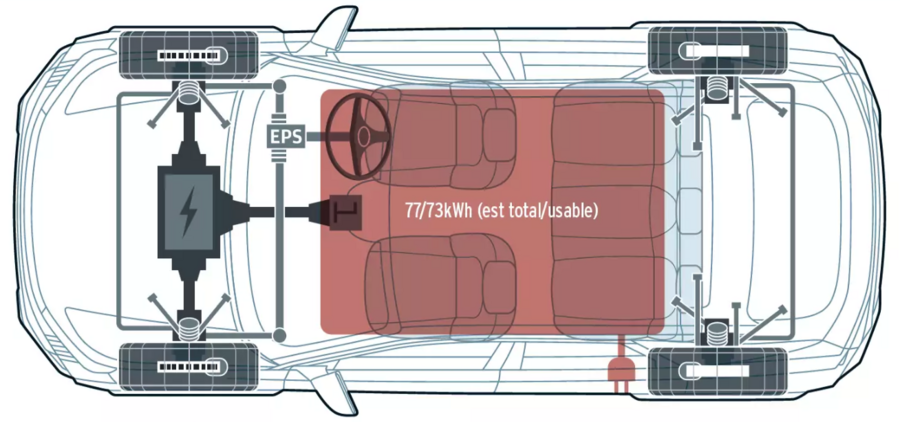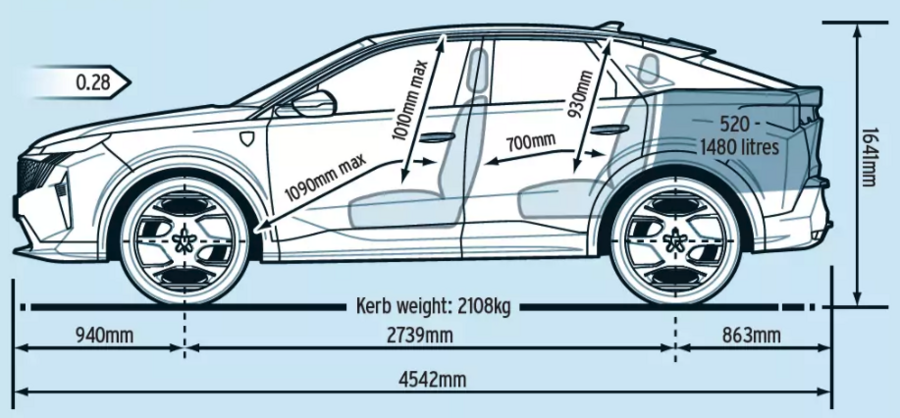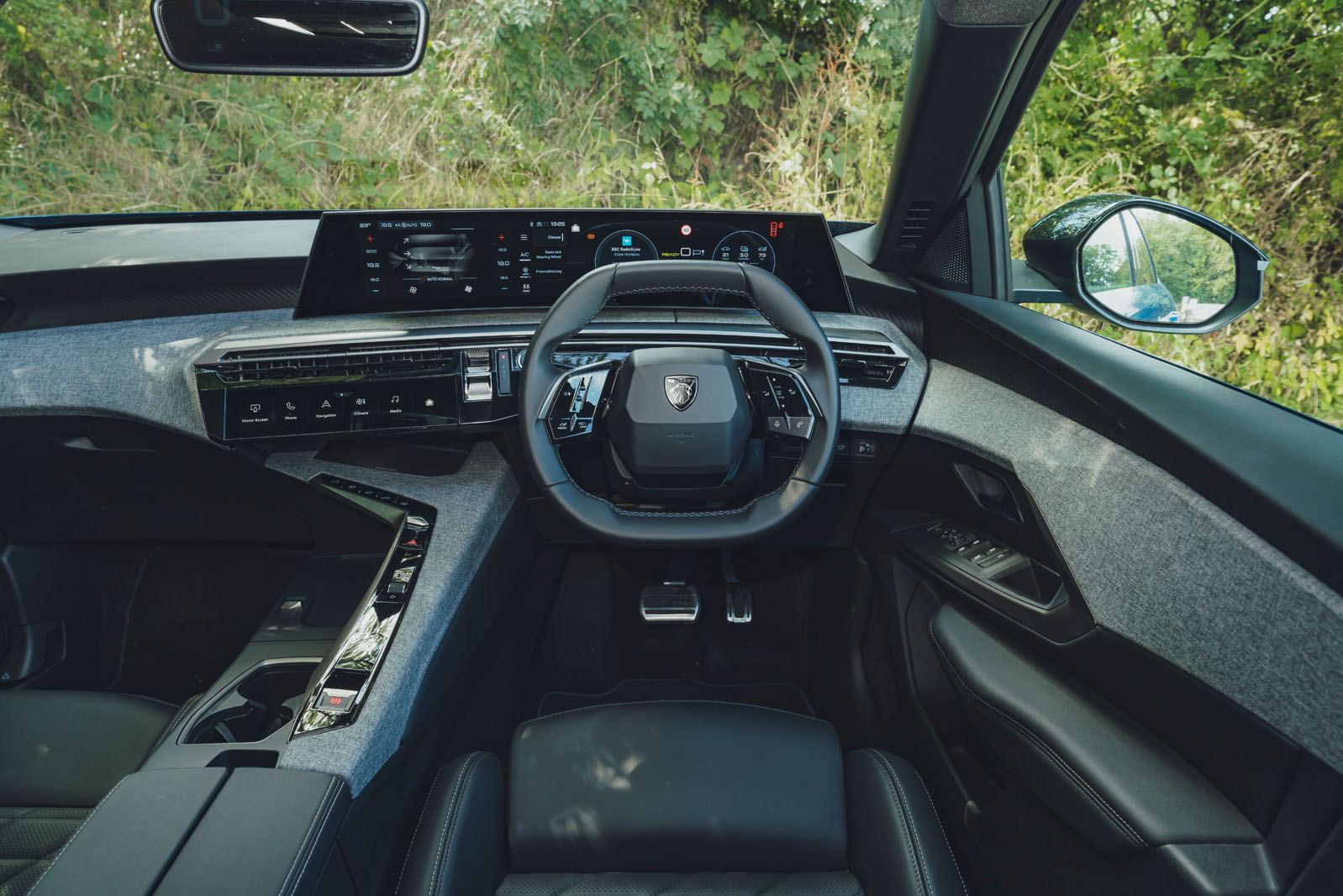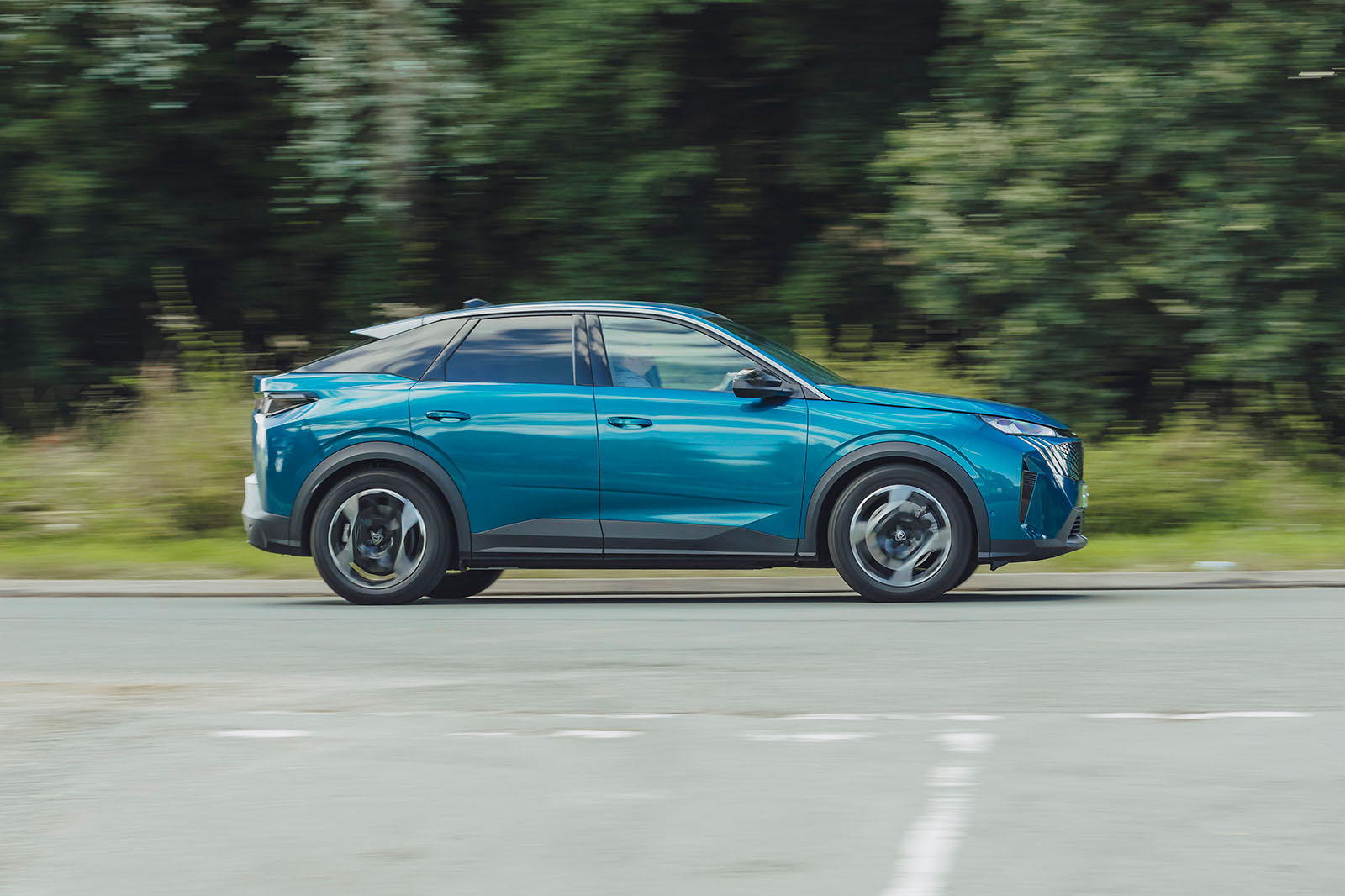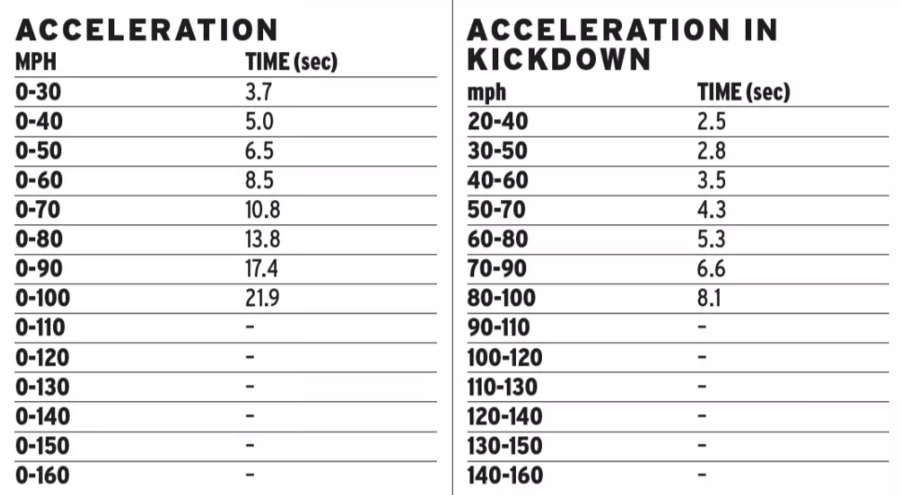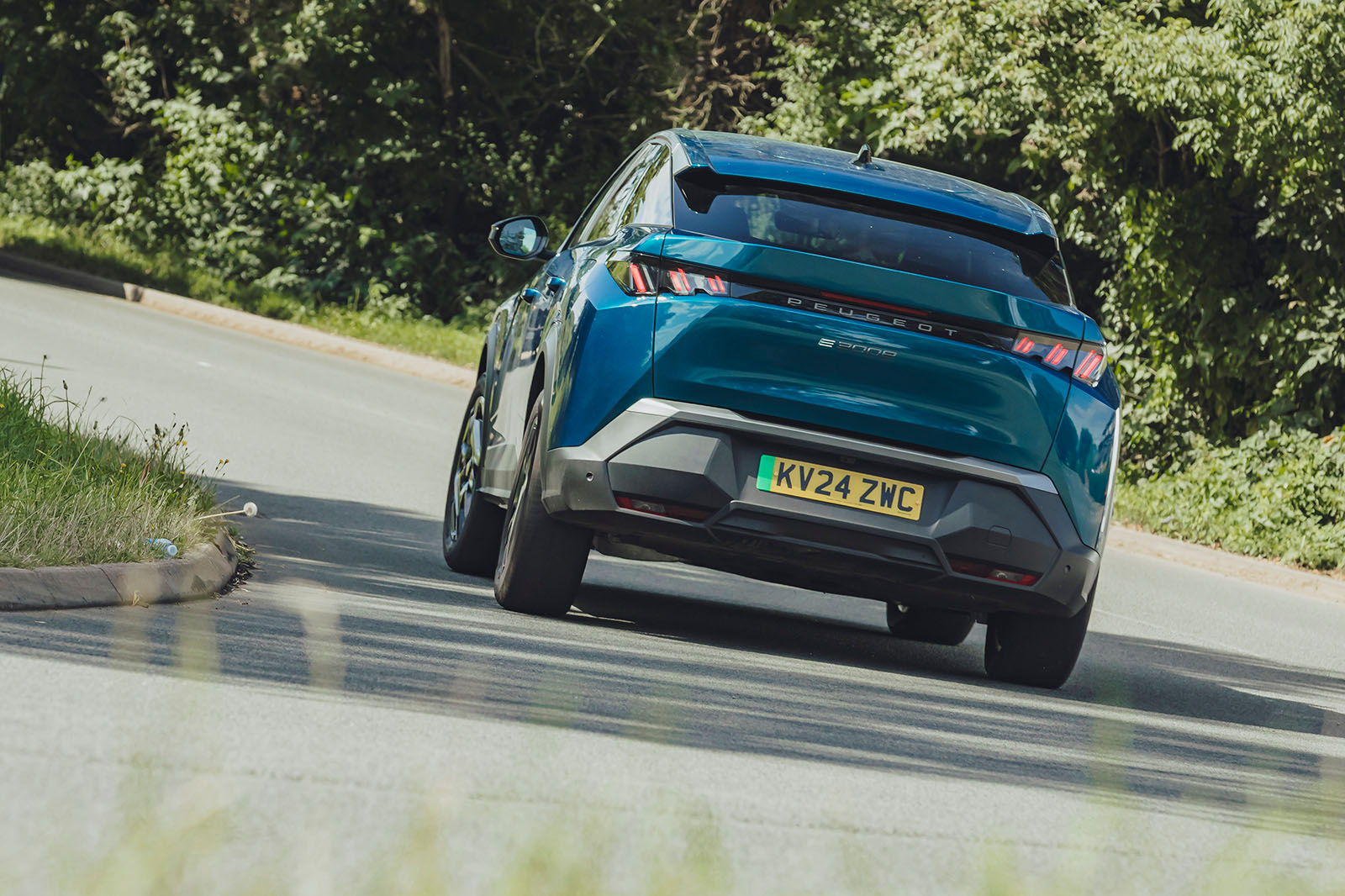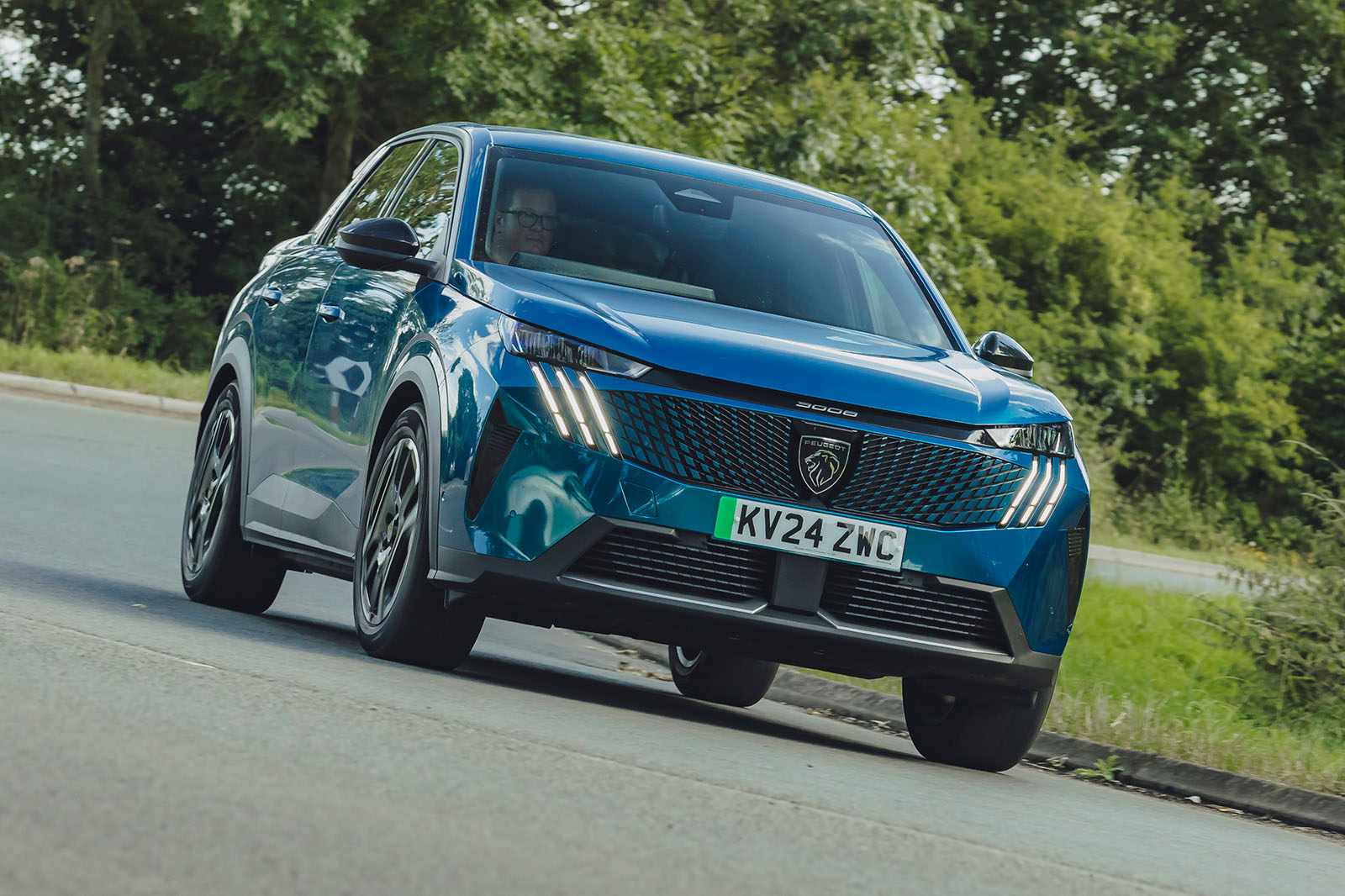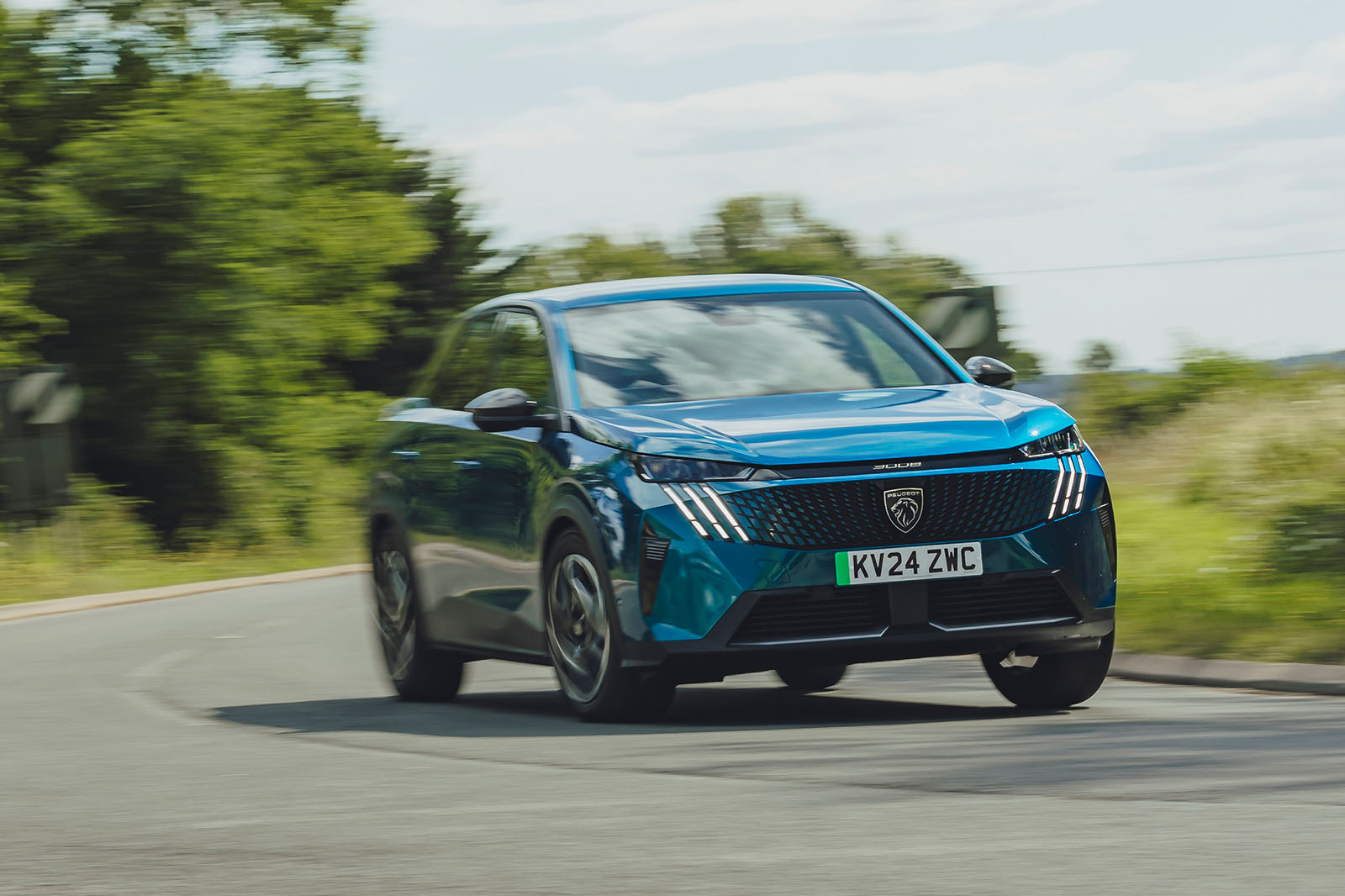While rivals have maximised the packaging advantages yielded by their underpinnings through long wheelbases and flat cabin floors, creating an impression of space that’s becoming particular to EVs, the e-3008 is a little different.
It’s aiming for more of a high-waisted, materially lavish, cocooning ambience than an open, spacious and airy one. It has quite a high-rising front bulkhead, which is necessary to make space for the car’s control and display concept (to which we will come) and which naturally flows into quite a high-set lower window line.
Between the front-row occupants is a high-rising, two-tier centre console that envelops the driver, carrying physical drive mode and heater controls on its upper surface and making plenty of storage space available at the lower one. It flows seamlessly into a fixed armrest console between the front seats.
In the three-seat back row, there’s a small bubble in the floorpan ahead of the centre seat and space to accommodate smaller adults and teenagers fairly comfortably but certainly not enough to stand out for passenger practicality in a
class where spacious five-seat cars are easy to find.
Boot space, according to our tape measure, is broadly similar below the window line to what you will find in the Scenic E-Tech, although a way behind the Model Y or Ioniq 5
and eaten into above the window line by the raked rear hatch.
Up front, the revision that this car represents to Peugeot’s well-established i-Cockpit control layout is significant. The e-3008’s steering wheel remains small and naturally sits quite low in your lap, but the instruments have been moved up behind it, integrated on a wide, 21in curved display panel that spans the top of the centre console as well as the instrumentation zone.
This is free-standing and backlit quite attractively, so that it appears to float in front of the fascia. Perhaps most importantly, it sits sufficiently high on the dash so as to prevent the wheel from obscuring the digital instrumentation (which itself is a little too graphic and over-stylised for some testers’ preference in some modes but clearer and simpler in others).
So configured, there’s certainly less to take objection to about Peugeot’s particular ergonomic philosophy on primary control and instrumentation layout than there has been for the past few years. The standard of the e-3008’s front seats for comfort is impressive. They have cushion inclination angle adjustment and plenty of wider support and configurability.
Moreover, the cabin’s wider material ambience and general perceived quality are likewise impressive. Our lower-trim Allure test car had attractive textile dash trim and a sense of apparent tactile quality running through the secondary controls and wider trim materials. This does feel like a step up in Peugeot’s commitment to force itself in among the premium German and Swedish brands for premium appeal – and it’s convincing.
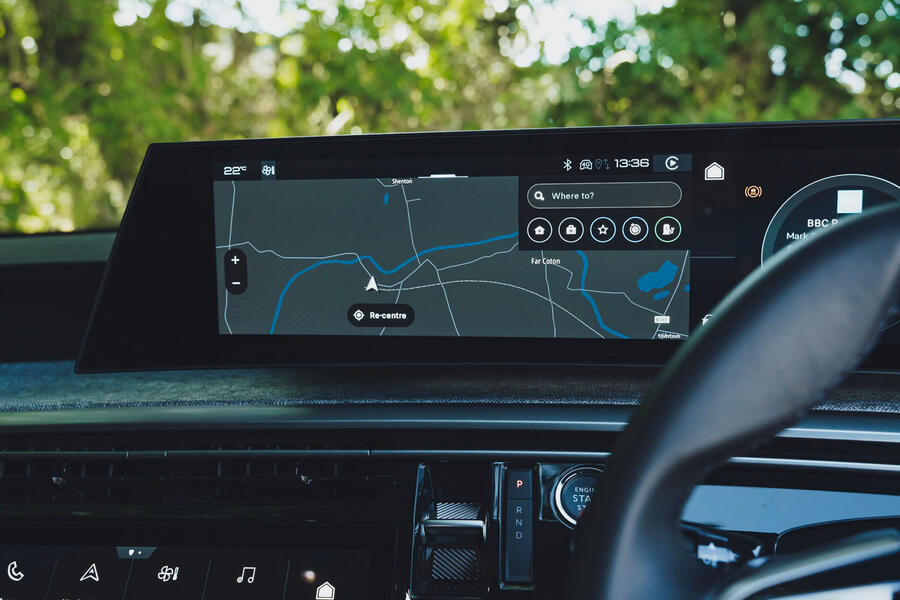
Multimedia system
Peugeot’s 21in curved panoramic display effectively takes the place of what might well have been separate infotainment, instrumentation and head-up display screens. It’s an impressively slick-looking piece of technology that’s attractively integrated.
It’s also capable of putting most of the information you want just where you want it thanks to the ‘tiled’ arrangement of the central part of the display, although it’s occasionally guilty of over-stylising the graphical execution.
There’s no physical controller for the main infotainment part of the screen, which we miss somewhat. However, the secondary i-Toggle quick-access screen below provides a big boost to usability.
The car gets 15W wireless smartphone charging as standard, although at that power level, you’re better off plugging in your device if it’s also maintaining a mirroring connection. Our test car didn’t have Peugeot’s premium audio system, by Focal, but its standard system was respectable enough.


